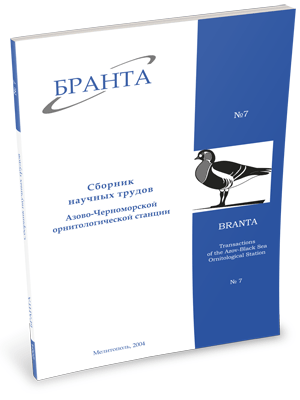
Transactions
of the Azov-Black Sea Ornithological Station



Circulation of helminthes in colonies of Pelicaniformes and Ciconiiformes in the south of Ukraine
Kornyushin V.V., Smogorzhevskaya L.A., Iskova N.I.
This paper is the survey of the literary and our own data on helminthes of Pelicaniformes and Ciconiiformes in the south of Ukraine. Helminthes were collected through total helminthological dissections of 318 birds of 14 species (3 species of Pelicaniformes and 11 species of Ciconiiformes) over the period from 1952 to 2001. Literary data (Gubsky, 1957 and others; Leonov, 1956 and others; Saakova, 1952) obtained after dissection of 237 birds of 8 species, were summarized as well.
Regional helminthofauna of these birds is estimated as 134 species that include 35 cestode species, 63 trematode species, 29 nematode species and 7 acanthocephala species. Of them, 16 helminth species are shared for Pelicaniformes and Ciconiiformes.
Special characteristics of Pelicaniformes and Ciconiiformes helminthofauna in some subregions (estuaries of the Dnieper, Dniester and Danube, sea coasts) were analyzed, as well as structure of local helminthofauna of these birds in the Black Sea Biosphere Reserve. Main routes of helminth circulation in the colonies of Ciconiiformes in the south of Ukraine are observed, the character of helminth exchange between birds from different taxonomic groups is shown, and principal, secondary and occasional hosts for helminthes are distinguished. Besides, there are revealed species of great epizootologic and epidemiologic importance (predominantly fish parasites).
Read the paper in a PDF file